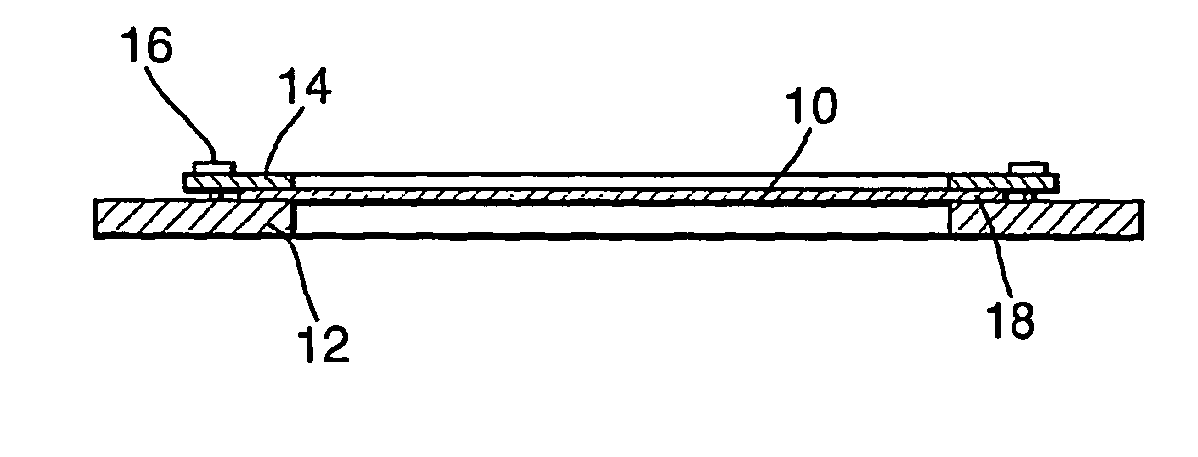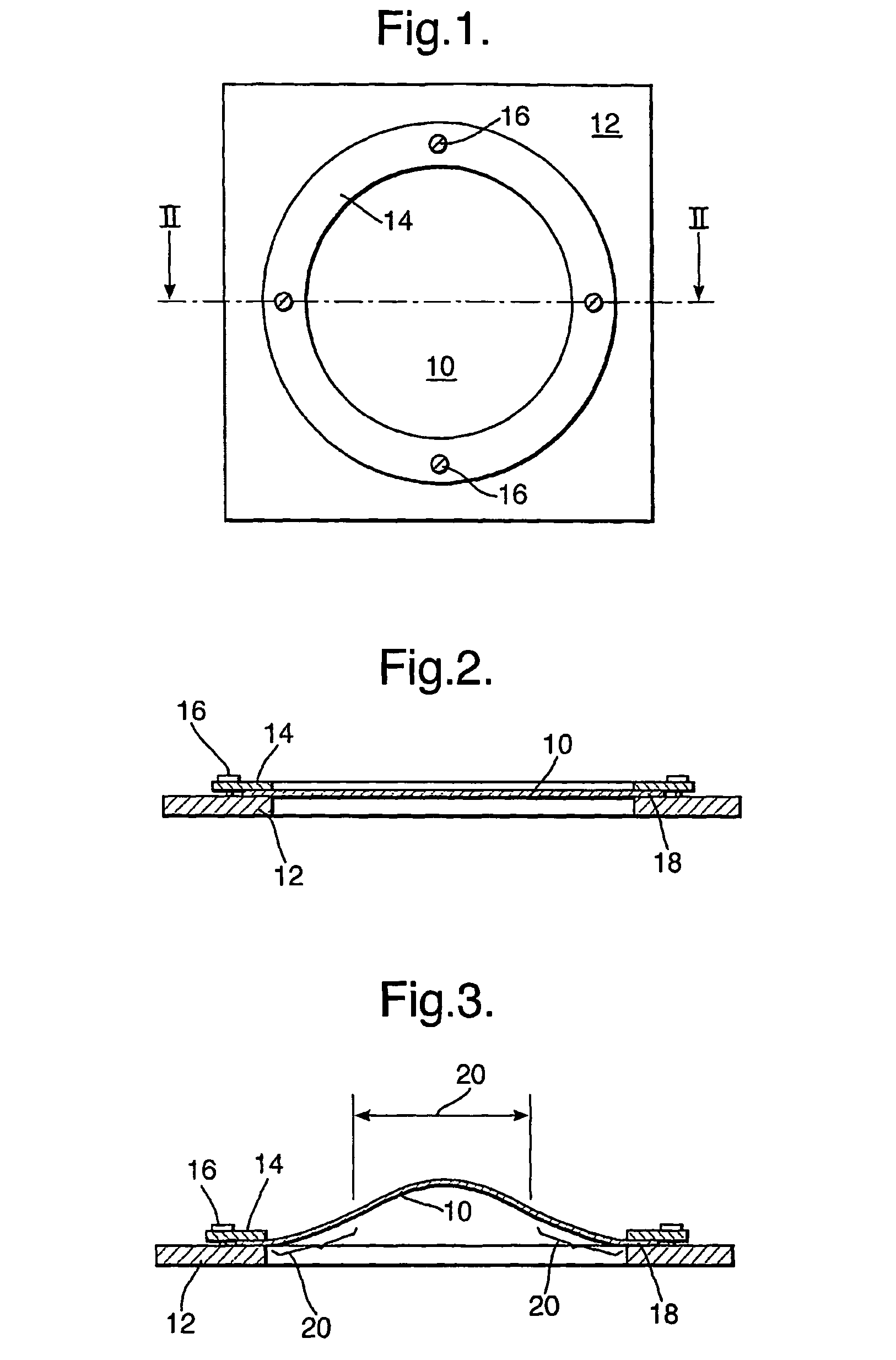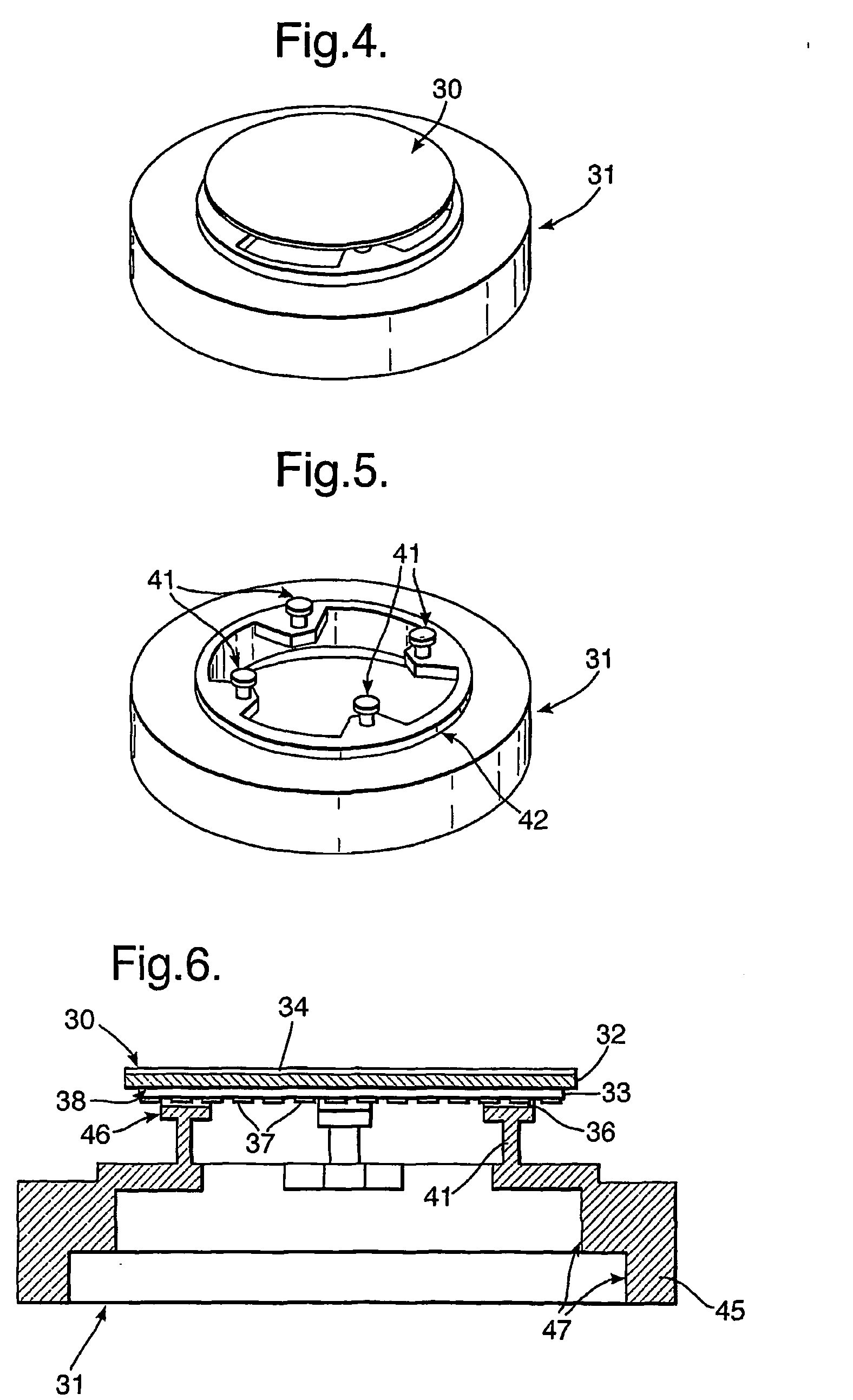Deformable mirror holders
a mirror and holder technology, applied in the field of mirror holders, can solve the problems of affecting the optical properties of the mirror, and causing the inflexion area to have undesirable optical properties,
- Summary
- Abstract
- Description
- Claims
- Application Information
AI Technical Summary
Benefits of technology
Problems solved by technology
Method used
Image
Examples
first embodiment
[0060] A deformable bimorph mirror 30 and a mount 31 according to the present invention are shown in FIG. 4. The mount 31 is a unitary structure made from stainless steel material. The mount 31 comprises a round body that defines a receiving portion (as partially shown) sized and shaped to receive and support the disc-shaped deformable bimorph mirror 30 on top. As is shown in the Figure, the mirror 30 in its assembled (upright) condition on top of the mount 31 is held clear of the mount 31.
[0061]FIG. 5 shows the mirror mount 31 of FIG. 4, without the mirror 30 for sake of clarity. The mount has a stepped profile 42 defining a generally circular aperture in the centre. Four flexure supports 41 are formed in equispaced relationship around the top most stepped section 42 of the mount body, each support being arranged to extend inwardly towards the centre of the aperture before turning upwards through 90° to extend in an upward direction for supporting the mirror (not shown). The four f...
fifth embodiment
[0082]FIG. 12 shows the present invention, without the mirror mount base for clarity (i.e. as viewed from the mirror's reverse side). In this embodiment, almost the entire inner face of the mirror substrate 32 is supported by a generally solid compliant material 60. This arrangement broadly corresponds to an inversion of the FIG. 11 arrangement in that whilst there are seventeen hole formations 61 in the compliant material 60 to permit connection to each of the mirror electrodes, most of the backside of the mirror is effectively supported by the compliant material 60.
[0083] In this embodiment, the compliant material of the passive support structure is rubber, epoxy or some form of metal (or other type foam). If desired, the compliant material could be readily configured as a narrow ridge structure (i.e. similar to the type of ridges that are used to stiffen up light structures) that follows the gaps between the mirror electrodes.
[0084]FIG. 13 shows an exploded cross-sectional view ...
PUM
 Login to View More
Login to View More Abstract
Description
Claims
Application Information
 Login to View More
Login to View More - R&D
- Intellectual Property
- Life Sciences
- Materials
- Tech Scout
- Unparalleled Data Quality
- Higher Quality Content
- 60% Fewer Hallucinations
Browse by: Latest US Patents, China's latest patents, Technical Efficacy Thesaurus, Application Domain, Technology Topic, Popular Technical Reports.
© 2025 PatSnap. All rights reserved.Legal|Privacy policy|Modern Slavery Act Transparency Statement|Sitemap|About US| Contact US: help@patsnap.com



